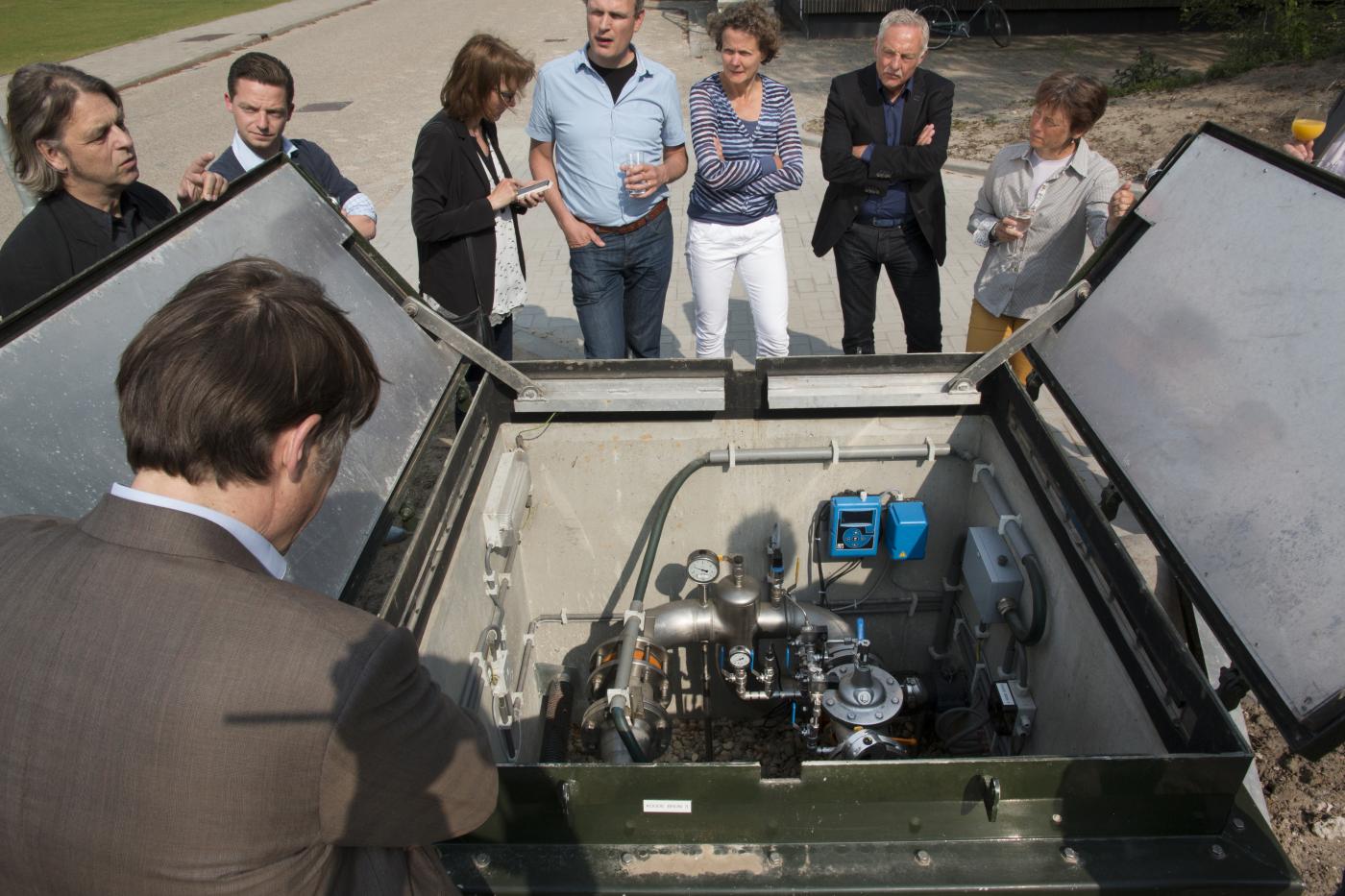UU aims at thermal energy storage; ultra-deep geothermal energy off the table

In the upcoming years, the institutions housed in the Utrecht Science Park (USP) will be working together to provide all buildings with sustainable heating. To accomplish that, large-scale thermal storage is essential. Multiple thermal energy storage systems are currently in use in the USP, but they are managed individually by several partners. To integrate the systems as efficiently as possible, the partners need to cooperate. If everything goes according to plan, the first collective thermal energy storage system will start being built at the beginning of 2023.
In a thermal energy storage system, hot and cold wells are tapped under the ground and connected by means of a ring system. In the summer, the buildings are cooled with water from the cold wells and, in the winter, the buildings are heated with groundwater from the heat source through the same heat exchanger. Buildings connected to the same ring system can exchange heat with each other.

A few years ago, the university realised two thermal energy storage systems: one near the Faculties of Science and Geoscience, and another one at the Faculty of Veterinary Medicine in the southeast part of the campus. In 2020, the technical system for thermal energy storage in the city centre was completed as well. For now, this system only provides heating to the Wied building, but soon it will be possible to connect all UU locations between Heidelberglaan Avenue and Leuvenbaan Avenue to this system. For peak demand, the hot water connection and heat pumps remain available.
In the future, at least two more thermal energy storage systems will be added at USP, both south of Heidelberglaan Avenue. Only the Incubator Foundation's building is connected to the current thermal energy storage system near the Faculty of Veterinary Medicine. The new thermal energy storage systems will ensure that the new buildings of that faculty, as well the SSH buildings, will also be provided with sustainable heating. These systems use the more recent technique that has also been applied in the city centre cluster, in which the sources are located at a depth of 60 to 125 metres. In the deeper ground layers, it’s easier to transport water back and forth, says UU project manager for energy Teun Lam. The older systems still use wells at a depth of 16 to 50 metres.
The goal of a joint Thermal Energy Storage System is to let the rings of the separate systems connect wherever possible. Several buildings at USP, such as the new RIVM building and UMC Utrecht, are now using their own well. When there is a systematic surplus or shortage of heat within one system, it may be worth integrating several systems. UU, UMCU, SSH, the Utrecht University of Applied Sciences, and the International School Foundation that is coming to the campus are going to join forces to investigate how this can best be tackled.
Ultra-deep geothermal energy
Utrecht University also participated in research into heat provision at USP by means of ultra-deep geothermal energy. The results however did not provide enough certainty for the commercial development of the technique, which is why the research efforts have been put to an end.
With ultra-deep geothermal energy, water is extracted from strata more than four kilometres deep. Here, the temperature is about 180 to 210 degrees Celsius - hot enough to vaporise water that can be used for central heating or electricity generation. This technique has never been used in the Netherlands before.
For an effective application of ultra-deep geothermal energy, a porous limestone layer is needed. Seismic research had to show whether this limestone layer existed at the right depth and was thick enough in Utrecht East. The research did provide valuable knowledge about the earth layers in Utrecht East. This knowledge can be used by market parties for further research, says the website (in Dutch).